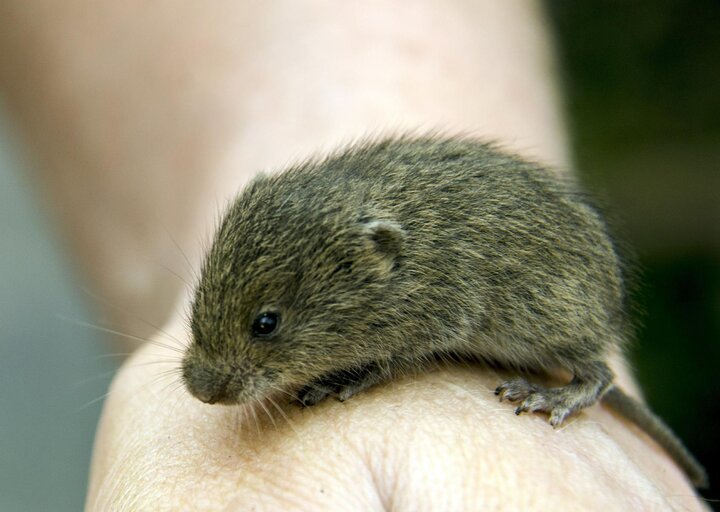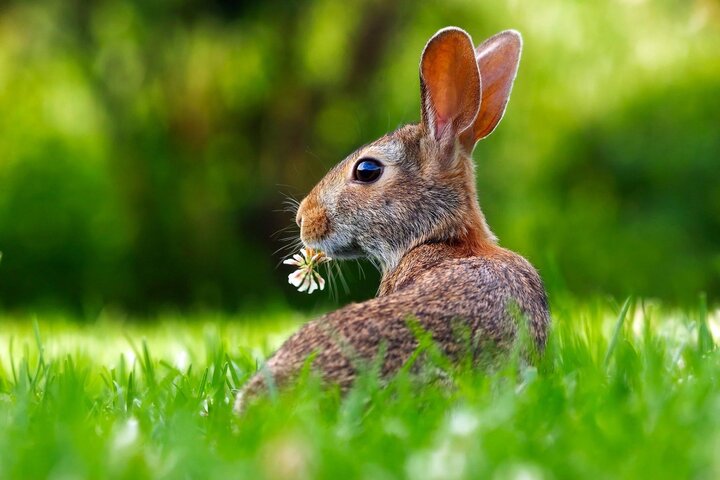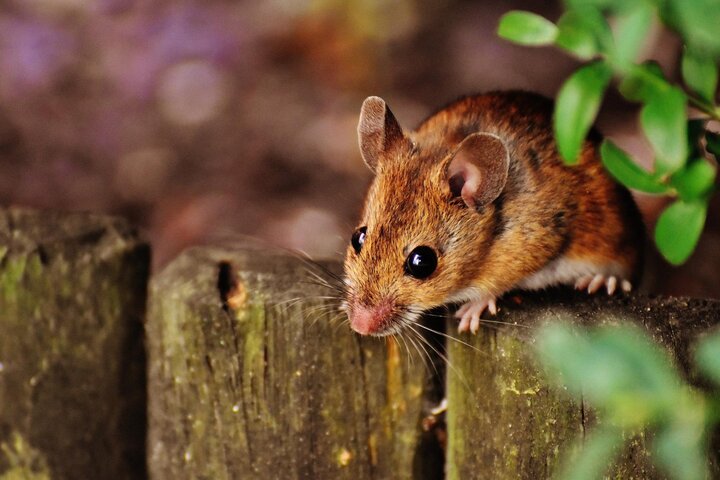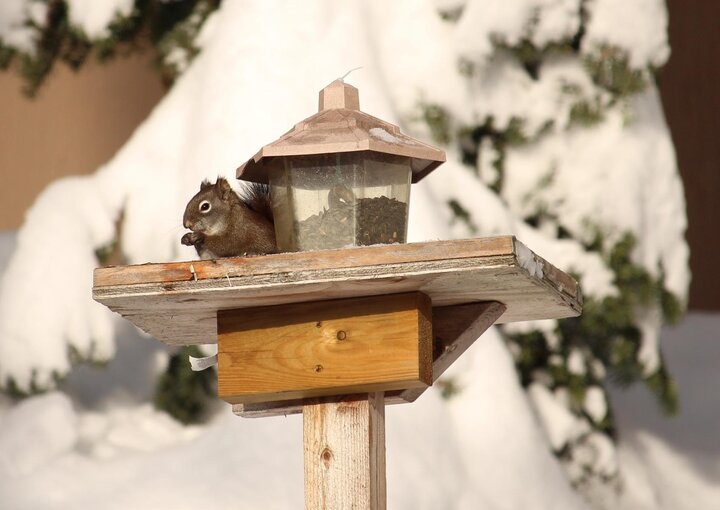Sarah Browning, Nebraska Extension Educator

Female cardinal at bird feeder. Image from Pixabay.
Moving from late fall into winter is a transition period for wildlife. Colder weather and declining food sources make damage to landscape plants and wildlife moving into our homes a significant possibility. Below are tips to help make the transition smoother for both wildlife and us, including tips for enjoying birds at your feeders this winter.

Protect trees and shrubs - Winter rodent damage to thin-barked trees and shrubs can be severe, but taking steps in the fall can help eliminate the problem. In most home landscapes, the principle culprits are rabbits and voles. Most homeowners are familiar with cottontail rabbits but are not as well acquainted with voles, a short-tailed relative of the common mouse. Voles have compact, stocky bodies with small eyes and ears that are partially hidden by their gray or brown fur.

Rabbits most often damage landscape plantings by clipping off small twigs, branches or buds, but they will resort to stripping the bark from young trees in winter if limited food sources are available. Voles, unable to find seeds to feed on in winter, may turn to trees or shrubs less than 2 years old because the bark is still thin and easy to chew through. This feeding may be confined to one side of the tree or occur in patches around the tree. When the bark is chewed off around the entire trunk, the tree’s vascular system (the tissues that move water and carbohydrates up and down the plant) is destroyed and the tree is killed. This type of injury is called "girdling”.
In some cases, particularly with rabbit feeding, the top of the plant may be completely detached from the trunk. This type of injury can be disastrous to a young tree. An evergreen chewed off below its lowest branch will never grow back. A deciduous tree that is chewed off will usually send forth a new shoot the next season and a new leader may be established.
Prevention is the only way to protect trees and shrubs from rodent injury since very little can be done to salvage plants once the damage has occurred. Constructing a physical barrier around new plants is the most effective control, but it can be expensive and time consuming. Make a cylinder of hardware cloth, ¼ inch mesh or less in size. Bury the wire 6 inches in the soil to prevent voles from tunneling under it and make it tall enough to stand at least two feet above the anticipated snowline so that rabbits will not jump over it. PVC pipe or black plastic drain tile can also be slit to fit around tree trunks, and applied in the same manner as the hardware cloth.
The most economically effective technique for large plantings of windbreak seedlings is to mow grass and weeds near the tree so the growth doesn't become a winter cover for rodents. Also pull mulches back from the trunk of new plants, to eliminate this source of winter protection for foraging voles.
Close and frequent inspections are recommended during the late fall and winter to discover and solve any rodent problems as soon as possible.

Keep unwanted guests out – As fall weather turns colder, close out unwanted guests such as mice, spiders, insects, wayward snakes and assertive squirrels. Give your home a walk around inspection. Check for loose or damaged louvers or screens. Check the caulking around pipes where the air conditioner, outside faucets or other services enter through the foundation. A few minutes spent checking can prevent an open-door invitation to unwanted guests.
Seed mixes for birds – Bird feeding usually takes an upswing as many people initiate fall bird feeding. Think about the seeds that you offer. One good mix to try is 50% sunflower (small black oil variety preferred), 35% white proso millet, and 15% finely cracked corn. Choosing the right seeds generally attracts more of the right birds and avoids excessive scattering from the feeder. Top it off with a bird bath – a large flower-pot saucer will work. Then find the fascination of feeder birds such as Black-capped Chickadees, Northern Cardinals, raucous Blue Jays and, by about October, Dark-eyed Juncos.

Preventing squirrels at feeders – Squirrels can become a nuisance on bird feeders. To deter squirrels, place feeders at least 7 to 8 feet away from solid tree limbs, fences or railings, and try to situate feeders so squirrels can’t jump onto them from above. To prevent access from below, erect feeders about 5 feet above the ground so squirrels can’t leap up to them, and add a guard over the feeder pole. One simple but effective guard can be made from aluminum duct pipe, about six inches in diameter and 24 inches long, installed over the feeder pole directly under the feeder. And consider foods squirrels that don’t like, for example safflower seed.
Images from Pixabay.
- Vole
- Rabbit
- Mouse
- Squirrel in a bird feeder